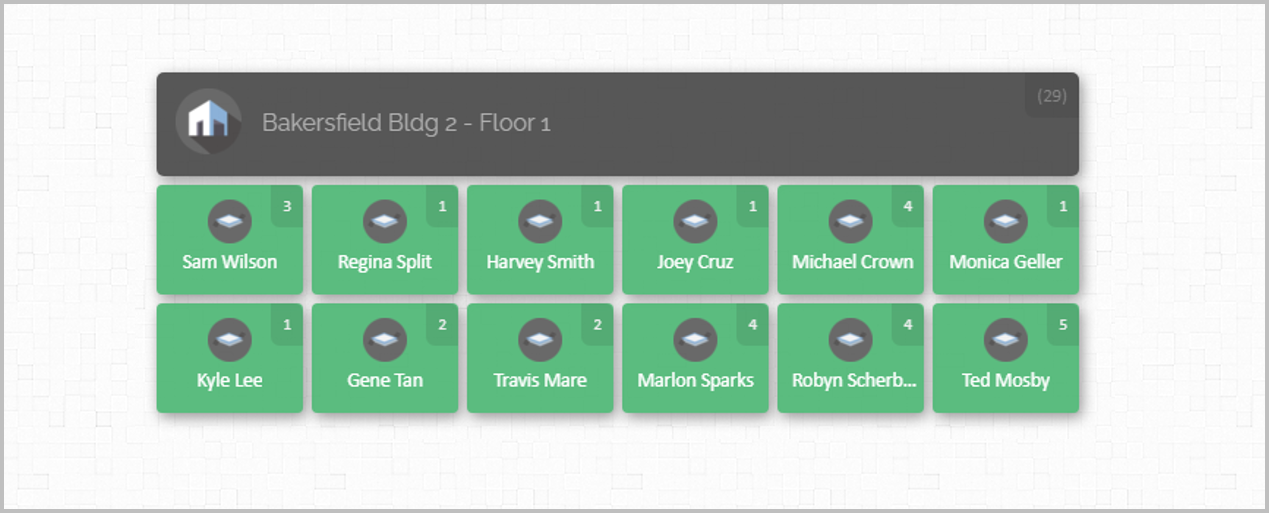Location Map
Simple vs. Complex
It's entirely up to you how you want to create your map. You can have a very simple map with only a few locations and few sub-locations, or you can have a very detailed and complex map where there's a location for every bin or shelf in every room. You can create your map based entirely on your preference or what you think would work best for you and your business.
Simple Map
If you are not particular about exactly where each item is in a specific room or building, you can use a few simple locations to model that part of your business. One location for each store may work. Or if you feel like you need to be a little specific, you can add a sub location or two to make things simple.
Complex Map
In many cases it will be very important for you to pinpoint exactly where your items are at all times. In this case you should create a complex and detailed map. Each location on your map will have many branches of sub locations. These may include every floor, room, shelf, closet, bin, etc.
You should create a location for any place where a product can be stored. This map will give you a lot of visibility over the items you're tracking and allow you to perform very intuitive operations during your day-to-day inventory management.
Managing People Using The Map
The CyberStockroom map is not just limited to physical locations. Many of our customers like to use the map to manage people as well. You can create a location dedicated to a specific employee, vendor, or customer. This is very useful if your business requires you to loan out items to your employees or customers. It's also very helpful to be able to know who has what at any given time.
If you have many people to manage it may not be a good idea to have a dedicated location for each one. In this case you could group people or teams together. If you like you could even assign someone who will be in charge of tracking the items for each group.
Horizontal Stacking vs. Vertical Stacking
All the primary locations in your CyberStockroom map can be rearranged to represent the layout of your business. There are 2 basic ways to rearrange these locations:
Horizontal Stacking
When you create multiple locations, they will be spread horizontally by default. This can become cumbersome if you have many locations and sub-locations because they will stretch across your screen. To scroll to a specific location you may have to drag the scrollbar at the bottom of your screen. Although many of our customers prefer this view, we recommend stacking your locations vertically so you can scroll down the page with your mouse wheel.
Vertical Stacking
An easier way to organize your locations is by stacking them horizontally. When you lay your locations out in this way, you will be able to easily scroll down with your mouse wheel.
Note 1 : With both vertical and horizontal stacking you can zoom in or out to your map by using the '+' and '-' keys on your keyboard.
Note 2: Each user in CyberStockroom can rearrange their own map even if they share the same map with other users. This way the map will always look exactly the way you want it.
Products
Unique Identifiers: Product Numbers / SKUs
CyberStockroom can generate automatic unique identifiers (product numbers/SKUs) for you when you create your products. In many cases this will be sufficient. However in many industries and applications it's important for you to create your own numbering system. Take some time to think about the best system for you and make sure that each product in your catalog will have a unique identifier that makes sense to you. When you create products in CyberStockroom, even if you use your own unique identifiers, you will be able to print and scan them in barcode forms. The following video explains the concept of serialization (using different identifiers for each item in your inventory). This is not always necessary but it may be useful for you in your business:
Create Custom Fields For Units of Measurements
CyberStockroom allows you to create and add unique fields to your products. If you have products that have different units of measurements (ex: Kilograms, Meters. Feet, Dozen, etc.) then it would be a very good idea to add a custom field for these units.




